For those who are trying to get pregnant, understanding your body and menstrual cycle is essential to increase your chances of conception. Many women believe the cycle lasts on average 28 days, but it is important to highlight that its duration varies from woman to woman. That’s why paying attention to your body lets you discover your fertile period more clearly.
Throughout this article, we will highlight important aspects related to ovulation and the fertile window. We’ll also provide tips on how to identify this valuable period to boost your chances of a positive result.
1. Phases of the menstrual cycle
2. How to identify the fertile window
3. Ovulation tests – how they work
4. Ovulation symptoms
1 – PHASES OF THE MENSTRUAL CYCLE
The menstrual cycle consists of several phases orchestrated by the action of certain hormones. These hormones signal some of the body’s changes and define each phase of the menstrual cycle.
Follow along with us to see which phases are part of the menstrual cycle and learn details about each one.
- Follicular phase
The first phase is the follicular phase, which begins on the first day of menstruation and corresponds to the phase before the egg is released. During this period, which lasts on average 14 days, there is an increase in hormone FSH. FSH stimulates the growth of follicles (which contain the eggs) in the ovaries.
With follicle production, estrogen production also increases. Rising estrogen causes changes in a woman’s body, such as increased mucus production and thickening of the endometrium – all to create an environment more favorable to possible embryo implantation. Along with this, there is increased production of LH hormone, which triggers the rupture of the follicle, releasing the egg and beginning the next phase.
Only one follicle will become dominant and mature completely, leading to the release of the egg.
- Ovulatory phase
Here is where ovulation happens. Increased LH, started in the follicular phase, completes the maturation of the egg which, once released, travels to the fallopian tubes.
During the ovulatory phase, the mucus becomes more elastic to help sperm move within the body.
The ovulatory phase lasts a short time, but the fertile window stretches a bit longer: about three days before and after ovulation. This phase ends when the egg is released.
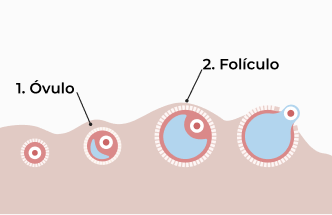
- Luteal phase
The luteal phase starts right after the egg is released. After the follicle ruptures, its tissue, now called the corpus luteum, produces progesterone. This, in turn, promotes changes in the endometrium, preparing the body for a possible pregnancy.
When pregnancy does not occur, the corpus luteum regresses, hormone production halts, the endometrium sheds and menstruation begins, starting the cycle all over again.
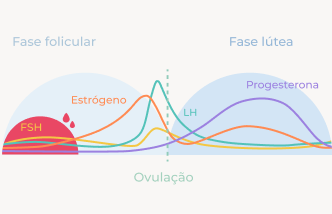
2 – HOW TO IDENTIFY THE FERTILE WINDOW
Knowing when the fertile window happens is the first step for those trying to conceive. It’s during the fertile window that you have the best chance of a positive result, so it’s important to track your cycle carefully to pinpoint this period.
Although some people believe it’s possible to get pregnant outside of the fertile window, this isn’t true. Because several factors are needed, getting pregnant outside the fertile period is practically impossible.
The fertile window is linked to ovulation. But what is ovulation? Well, ovulation is the moment when the egg is released into the fallopian tubes. If fertilized, the egg will become an embryo; otherwise, the egg dies and is shed along with menstruation.
Some women think that figuring out the fertile window is only about counting to the middle of the cycle, that is, to the 14th day after menstruation starts. However, that’s not always the case! Many women have irregular cycles, so assuming ovulation will happen exactly in the middle of the cycle could actually harm your chances of pregnancy.
Did you know that we, as women, are born with our lifetime supply of eggs already in place? Throughout our lives, we release them with each cycle, and for that reason, the older a woman is, the fewer eggs she will have available.
It’s also important to keep in mind that, apart from the quantity not being the same, egg quality may also decline. So, even if pregnancy occurs, there may be issues during gestation.
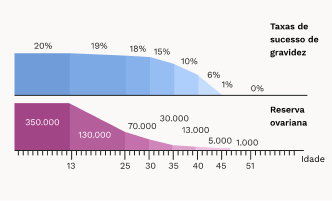
In addition to age influencing both the quantity and quality of available eggs, it’s also important to consider that other factors, such as lifestyle and unhealthy habits (like smoking and physical inactivity), negatively contribute to this scenario.
Myth or fact: Is it true that pregnancy can only occur during the fertile window?
This is a very common and understandable doubt given the “sea of information” we have to absorb when looking for a positive result. The reality is that when in the fertile period, the chances of getting pregnant increase by about 25%.
We know that fertilization happens when the female gamete (egg) meets the male gamete (sperm). So, even if a woman has unprotected sex, she won’t get pregnant if there’s no egg ready for fertilization. And as we’ve seen, the egg is only released during this “fertility window,” that is, on specific days.
Therefore, it is almost impossible to get pregnant outside the fertile window, because how could it happen if one of the gametes is absent? This is one of several differences between men and women in terms of fertility. Men produce gametes all the time, while women ovulate only once per month and release just one egg in each fertile period.
Myth or fact: Are there positions that help you get pregnant and does elevation help?
Experts agree: when it comes to getting pregnant, positions which involve raising or tilting the vagina are considered the most effective.
Several studies have been conducted on this topic, some even using MRI, to observe in detail what happens inside the vaginal canal during penetration in certain positions.
Among the so-called “gold standard” positions to get pregnant, the “missionary” is an example. In this position, the vagina tilts toward the cervix and the tip of the penis is directly aligned with it, guiding the sperm on its way to the egg. A tip is to place a pillow under the hips for added support.
Another recommended position is the so-called “doggy style,” where the woman is on all fours. As penetration is deeper, gravity helps and sperm has greater reach, getting to the cervix more quickly.
One tip that can help, no matter which position the couple chooses, is for the woman to stay in bed for a little while after intercourse. This is because studies have shown that patients who underwent artificial insemination and remained lying down for about 15 minutes had a 50% higher chance of getting pregnant than those who got up immediately.
I have irregular cycles, what should I do?
Many women have irregular cycles and, in such cases, extra attention is needed to pick up on the signs the body gives when ovulation and the fertile period are approaching.
Some women have longer cycles, others shorter, and in some cases, they may not even be ovulating.
In all cases, it’s important to observe your cycle over time, noticing the changes in your body that emerge throughout. Ovulation tests (see next topic) are a practical, quick alternative to help identify the fertile window.
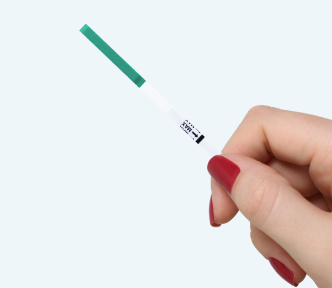
Generally, there are three common fertility signs: cervical mucus, basal temperature and the cervix position. Throughout the cycle, each of these signals changes, allowing the fertile window to be more easily spotted.
Women who use birth control correctly do not have a fertile window, since ovulation does not occur. In those cases, menstruation is “withdrawal bleeding” which happens when hormone levels drop.
- Cervical mucus
Cervical mucus is a discharge that helps transport sperm. As the fertile window approaches, the mucus becomes more clear and elastic, like “egg white.”
- Basal temperature
This is our body temperature at rest. As ovulation nears, basal temperature gradually increases, reaching its peak when ovulation actually starts. Tracking basal temperature daily therefore helps you understand when ovulation occurs.
Typically, temperatures range from 36º to 37ºC during the first phase of the cycle, when the egg develops. This observation method also helps with learning about your own body and is quite simple to do. You just need a basal thermometer, ideally for personal use, and a notebook to record your readings.
- Cervix
As ovulation approaches, the cervix opens up, becoming softer and higher. This happens to make it easier for the sperm to pass into the uterus.
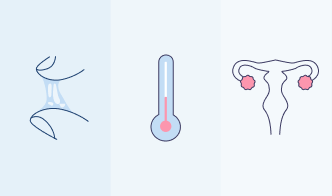
If you’re looking for another tool to help detect your fertile window, Famivita Contents offers an Ovulation Calculator. It doesn’t provide the exact day of your fertile window or ovulation, but it can give you a good estimate of when it might occur. You can check out the Fertile Period Calculator here at this link.
We recommend using the Fertile Window Calculator together with ovulation tests for more accurate detection.
What happens after ovulation?
After the egg is released, it remains in the fallopian tubes for between 12 to 24 hours, waiting for the sperm. With high levels of progesterone, the body is already preparing for possible fertilization: the uterus becomes more lined so that the future embryo can implant there.
Did you know the sperm can survive up to 5 days inside the woman’s body? That’s why having intercourse a few days before you ovulate increases the chance that sperm will reach the egg on time.
If the egg isn’t fertilized, estrogen and progesterone levels drop and the thick lining that formed in the uterus breaks down, causing menstruation and starting the next cycle.
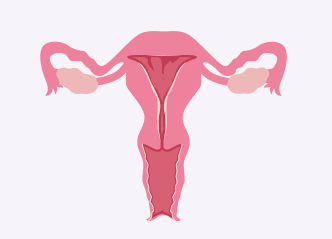
3 – OVULATION TESTS – HOW THEY WORK
As we know, hormones are the main players in making ovulation possible. When increased, LH hormone is responsible for completing the egg’s maturation and releasing it to the fallopian tubes. Ovulation tests specifically detect this rise in LH, indicating that ovulation is near.
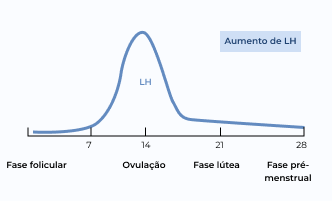
It’s important to start using ovulation tests right after your period ends and to be mindful if you are using ovulation inducers, as they may affect the results.
Ovulation tests are very simple to use female fertility tests: they work like a pregnancy test, that is, with urine. You should use it daily, and the darker the test line gets, the more LH is being produced and therefore the closer ovulation is.
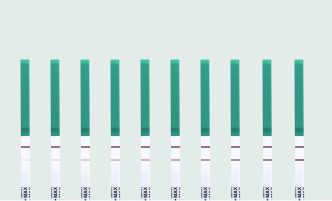
Ovulation tests are important to confirm your ovulation day, which lets you know when your fertile window starts. This makes it possible to plan intercourse and increase your chances of a positive result.
Understanding and tracking your fertile window might be the push you need for a positive result. Learn about Brenda’s story, one of our #famivitamoms, who was able to get pregnant after discovering her ovulation period by using our ovulation tests! See the complete story on our website.
4 – OVULATION SYMPTOMS
Ovulation is a process which, due to involved hormones, causes various changes in a woman’s body. While some symptoms are noticeable, many can go unnoticed. That’s why keeping track of your cycle daily is essential for knowing when ovulation is approaching.
Ovulation symptoms
- Clear, stretchy cervical mucus, like “egg white”
Cervical mucus is important in helping sperm travel inside the female body. The closer you are to ovulation, the more favorable mucus becomes, helping sperm move more easily inside the body.
- Increased basal temperature
Due to increased progesterone, basal temperature rises, which can be verified by checking your temperature daily upon waking.
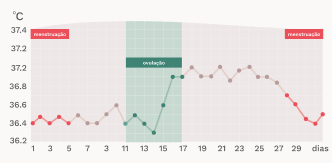
- Increased libido
It’s possible that some women feel an increase in libido – after all, nature is smart and gives an extra nudge towards pregnancy.
- Mild pelvic pain
Also called “ovulation pain,” it’s a pain similar to cramps, in the lower abdomen, that happens due to the release of the egg.
Understanding your menstrual cycle is the first step to making conception more viable, since you can plan intercourse and direct your efforts accordingly. The best day to get pregnant is precisely just before ovulation: as sperm can survive up to 5 days inside a woman’s body, it will already be waiting for the egg to be released and ready for fertilization. Therefore, use ovulation tests, pay attention to your symptoms and get to know your body to maximize your chances of a positive test.
ABOUT THE AUTHOR – PATRICIA AMORIM: Mother of Joana, Eduardo and Melissa, with a total of 7 years of experience with trying to conceive. She is the founder of the Famivita brand and Trocando Fraldas, one of the largest motherhood portals in Brazil, now called Famivita Contents, serving over 3 million users monthly. Her YouTube channel has more than 250,000 subscribers.











